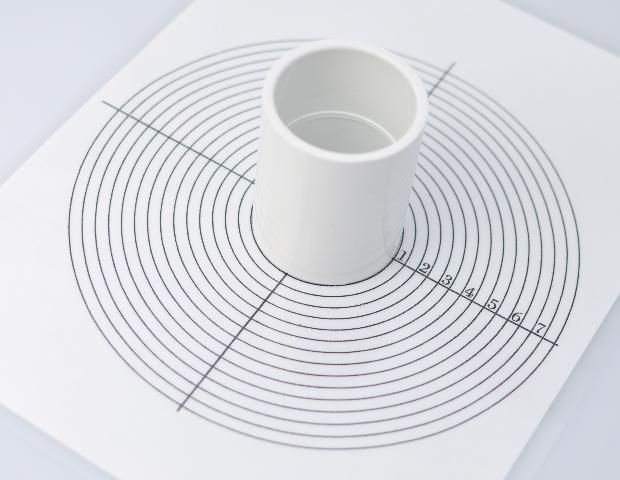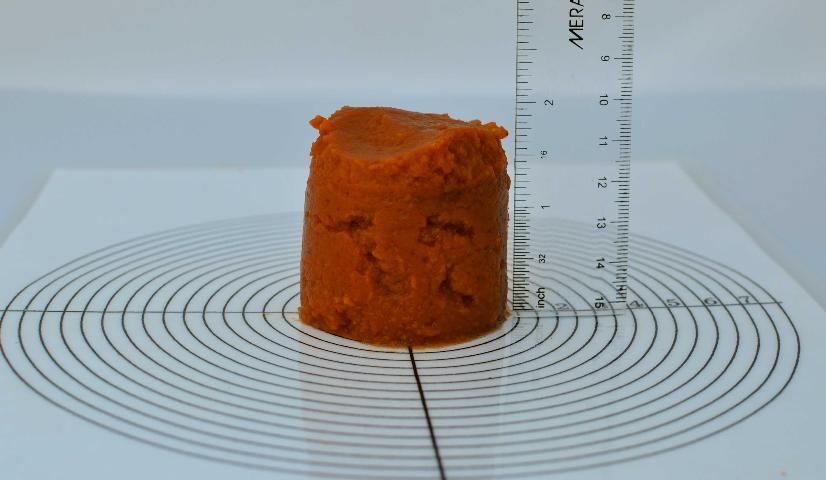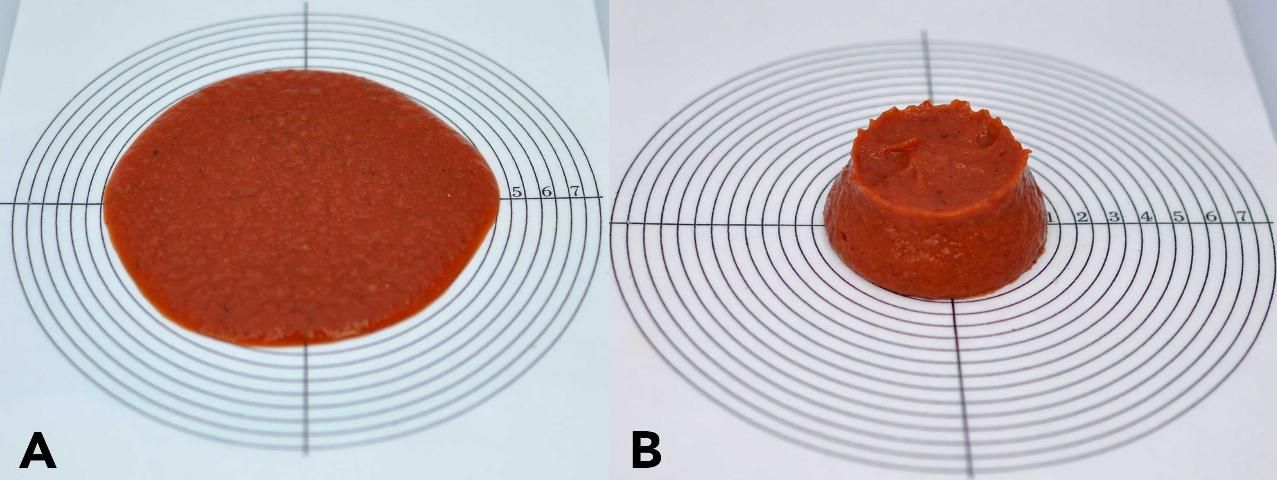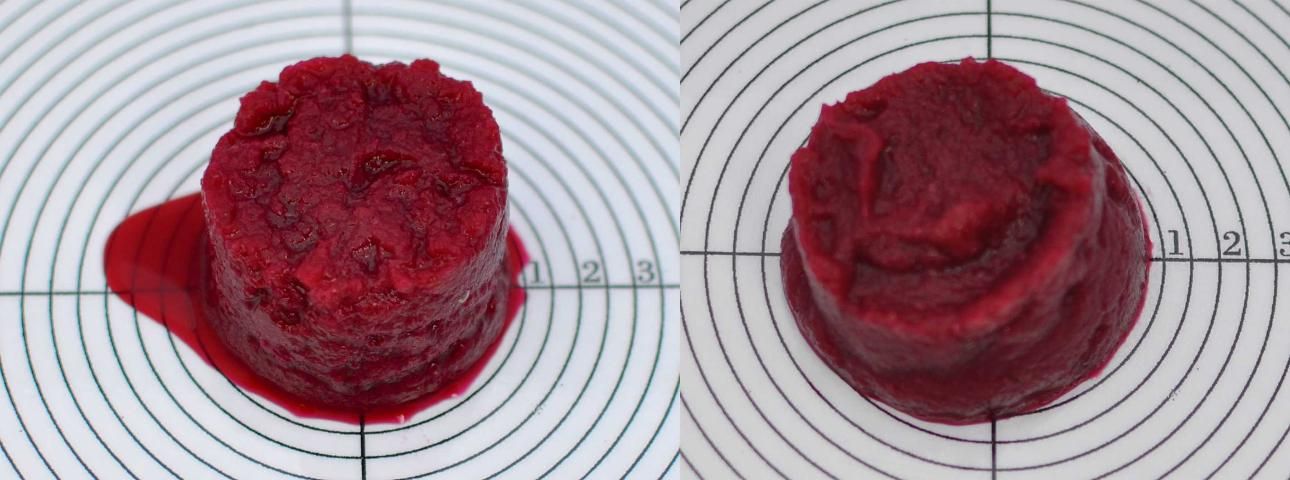What is a slump test?
The slump test is a method to assess the texture of foods (Bourne 2002). This test has traditionally been used to evaluate the quality of canned foods such as pumpkin pie filling, squash, creamed corn, and applesauce.
How is a slump test performed?
The slump test is quick, easy, and inexpensive to perform. A hollow cylinder, a laminated sheet of paper marked with concentric circles, and a flat surface are needed to perform the test (see Figure 1). The hollow cylinder is filled with the food to be tested. The cylinder is then lifted, and the food is allowed to "slump" for a designated time period (e.g., 30 seconds). For stiff foods such as pumpkin, the height of the food sample before and after it slumps can be measured and compared (see Figure 2). For thinner foods such as applesauce, the diameter of the slumped food (line spread) can be measured (See Figure 3).

Credit: Lincoln Zotarelli, UF/IFAS

Credit: Lincoln Zotarelli, UF/IFAS

Credit: Lincoln Zotarelli, UF/IFAS
Can the slump test be used to evaluate puréed foods?
Although the slump test has been used for assessing the texture of certain canned foods, it can also be used to test the consistency of puréed foods (https://edis.ifas.ufl.edu/fs168) prepared for individuals with swallowing problems known as dysphagia. Puréed foods may exhibit a wide range of consistencies. A puréed food prepared for people with swallowing problems should not be too thin or too thick.
Puréed foods that are thin and runny may be unappetizing and difficult to eat, especially for those requiring assistance with eating. Puréed foods that are too thin may pose a risk for those that have difficulty swallowing thin liquids. Figure 4a shows a puréed tomato salsa that may be too thin to be acceptable. The addition of a small amount of tomato paste and puréed beans can be used to thicken a puréed salsa (Figure 4b). Note that the amount of thickener added will depend on the volume of puréed food prepared as well as the target consistency desired.

Credit: Lincoln Zotarelli, UF/IFAS
Mashed potatoes are an example of purée-textured food that can be so thick that no slumping occurs. Depending on the needs of the individual with the swallowing problem, some puréed foods that do not slump may be too thick for safe swallowing. Puréed meat is another example of a food that, depending on how it is prepared, may be too thick to slump (Figure 5). Gravy can be added to puréed meats that are too thick.

Credit: Lincoln Zotarelli, UF/IFAS
The slump test can also be used to evaluate puréed foods for water separation. Water seeping from the puréed food may decrease acceptability. In addition, some people with swallowing problems have trouble safely swallowing foods with water separation as these foods have both a liquid and a solid phase. Puréed foods are most acceptable and safest to swallow when they do not exhibit water separation. Some puréed vegetables, due to their high water content, exhibit water separation (Figure 6a). The addition of a thickener, such as a small amount of puréed canned beans, can reduce water separation (Figure 6b).

Credit: Lincoln Zotarelli, UF/IFAS
The slump test is a quick and easy method to evaluate the texture of puréed foods, large batches in particular. Many puréed foods become thinner when they are heated, so if this test is used as a quality control method for puréed food production, foods need to be tested at a consistent temperature, such as room, refrigerator, or serving temperature. When preparing small amounts of puréed foods, such as 1 to 2 servings, the "spoon test" may be the preferred method to evaluate consistency. See: https://edis.ifas.ufl.edu/fs204.
How much should a puréed food slump?
No standards have been developed for the use of the slump test in the evaluation of puréed foods intended for consumption by individuals with dysphagia. As the needs of individuals with swallowing disorders vary, it is important to consult with health professionals trained in dysphagia management to assist with the setting of texture goals.

Reference
Bourne, MC. 2002. Food Texture and Viscosity: Concept and Measurement. Second Edition. Academic Press, New York.